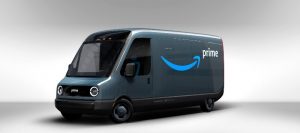How companies are using electric trucks to reduce air pollution and save money

What do Amazon, Goodwill and PepsiCo have in common? They’re all investing in heavy-duty electric trucks. It’s a move that’s making great strides to reduce air pollution and save money.
Fortunately for these companies, making the switch to electric fleets is about to get a whole lot easier. The California Air Resources Board has just proposed a new standard that will require heavy-duty automotive manufacturers to produce more electric, zero-emission vehicles. Beginning in 2024, there could be thousands more new electric fleet vehicles on the market in California.
Emissions from heavy-duty trucks, buses and other large vehicles account for 35% of California’s NOx emissions— a lung irritant that affects people’s ability to breathe. And studies show the particulate matter in diesel exhaust can significantly increase the risk of cancer. Swapping them out for cleaner options is a fast and reliable way to improve the state’s air quality. And now, there’s an economic benefit too.
How companies are using electric trucks to reduce air pollution and save money Share on XRecent CARB models indicate that, while some electric vehicles cost more than traditional diesel vehicles at the time of purchase, they are actually cheaper to own and operate over the lifespan of the vehicle. This is largely due to the fact that they require less maintenance over time and there is virtually no fuel cost. It’s also a big reason why the state is pursuing a new standard for electric fleet vehicle manufacturing.
Additionally, California has a number of programs and incentives that can help bring down up-front cost. The Hybrid and Zero-Emission Truck and Bus Voucher Incentive Project and the Carl Moyer Program both provide grants to fleets who invest in zero-emission vehicles.
Similarly, charging infrastructure for electric fleets is also cost effective. Utilities like Southern California Edison, Pacific Gas and Electric, San Diego Gas and Electric, and the Los Angeles Department of Water and Power are all engaging in low-cost, free charging infrastructure projects specifically for medium and heavy-duty electric vehicles.
The environmental and public health benefits of switching to electric vehicles cannot be overstated. Many of the trucks on the road today deliver consumer products from point A to point B, and the exhaust and pollution from these vehicles is a major concern for the communities these vehicles travel through.
Across the country we’ve seen communities push back against warehousing and distribution facilities that attract dirty, gas-guzzling trucks — even if these facilities bring jobs to a community. Cities and regions around the world are declaring an end to transportation pollution, and customers are starting to distinguish companies based on the responsibility of delivery in their operations. It’s a big reason why forward-thinking fleet owners like Amazon, Walmart and others, are adopting zero-emission vehicles.
Adopting electric medium and heavy-duty vehicles and showing public support for efforts that bring more of these vehicles to market — like what California is currently proposing — is a key way for companies to demonstrate their commitment to the health and well-being of the customers they serve.










